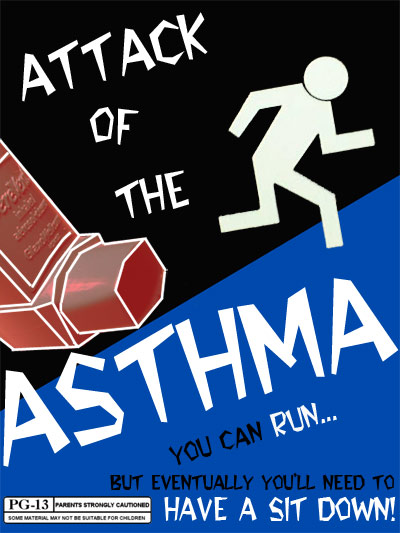
21 Sep 2019 HYN Himalayan Yoga Academy
Introduction: Bronchial Asthma
The asthmatic disorder is a chronic (recurring) inflammatory condition in which the airways develop increased responsiveness to various stimuli characterized by repeated episodes of wheezing, breathlessness, chest tightness, and cough that are at least partly reversible, either spontaneously or through treatment. It is thought that inflammation causes an increase in airway responsiveness (bronchospasm) to a variety of stimuli. Some of these stimuli would have little or no effect or non-asthmatics with normal airways. Many cells play a role in the inflammatory response. More about Bronchial Asthma.
Asthma causes the narrowing of airways and broncho-spasm. The airway narrowing process basically involves:
- Tightening of the smooth muscles around the airways
- Swelling of the airway
- Collecting of thick mucus secretions in the airways
Signs and Symptoms of Bronchial Asthma
- Asthma is characterized by difficulty in breathing, wheezing, and coughing.
- Tightness of the chest/discomfort in the chest.
- Attacks last from one to several hours.
- Severe attacks may affect the heart and circulatory system.
- A severe attack, not responsive to usual therapy is called status asthmatics” and is a medical emergency.
- Hypercarbia, acidosis, and hypoxia is rare in Asthma.
Factors for Bronchial Asthma Triggers
- Tobacco smoke
- Infections such as colds, flu, or pneumonia
- Allergens such as food, pollen, mold, dust mites, and pet dander
- Exercise
- Air pollution and toxins
- Weather, especially extreme changes in temperature
- Drugs (such as aspirins, NSAIDs, and beta-blockers)
- Food additives (such as MSG)
- Emotional stress and anxiety
- Smoking, perfumes, or sprays
- Acid reflux
- Occupational irritants (gases, fumes, vapors, dust, tobacco or other smoke, air pollution of any kind)
- Microscopic droppings of dust mites and cockroaches, airborne pollens and molds, plants and plant proteins, enzymes, and pet dander (minute scales of hair, feathers, or skin)
- Viral, sinus infections such as a cold
- Exposure to an allergen (to which the person is allergic)
Management of Bronchial Asthma
Dietary Management
- Diet plays an important role in the management of asthma.
- There are foods, which are allergic to asthma patients and such foods should be avoided. These foods include cold foods, ice creams, chocolates, stimulants, etc
- Foods that add to mucous production should be specifically avoided.
- Try to take warm water/ drinks
- When you have an asthma attack, avoid taking food after sunset.

Yogic Management
- Shatkriyas: Jalaneti, Sutraneti, Kapalbhati, Kunjal, Vastra Dhouti
- Om chanting and Prayer
- Suryanamaskar
- Selected Practices of Sukshma Vyayama: Uccarana Sthala tatha Visuddha chakra suddhi, Budhi tatha dhriti shakti vikasaka, Vaksha sthala shakti vikasaka- 1 and 2
- Yogasanas: Tadasana , Katichakrasana, Urdhwahastottanasna, Gomukhasana, Usthrasana, Vakrasana, Bhujangasana, Sarvangasana, Sarala Matsyanasa, Shavasana
- Pranayama: Full yogic breathing, Nadisodhana Pranayama, Suryanadi Pranayama, Bhramari
- Yoga Nidra
- Om Meditation
